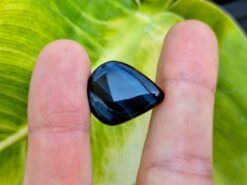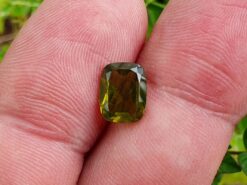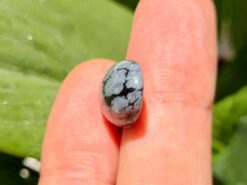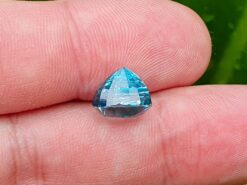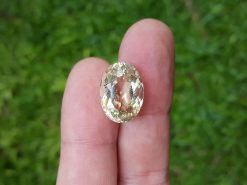Cat’s eye kornerupine
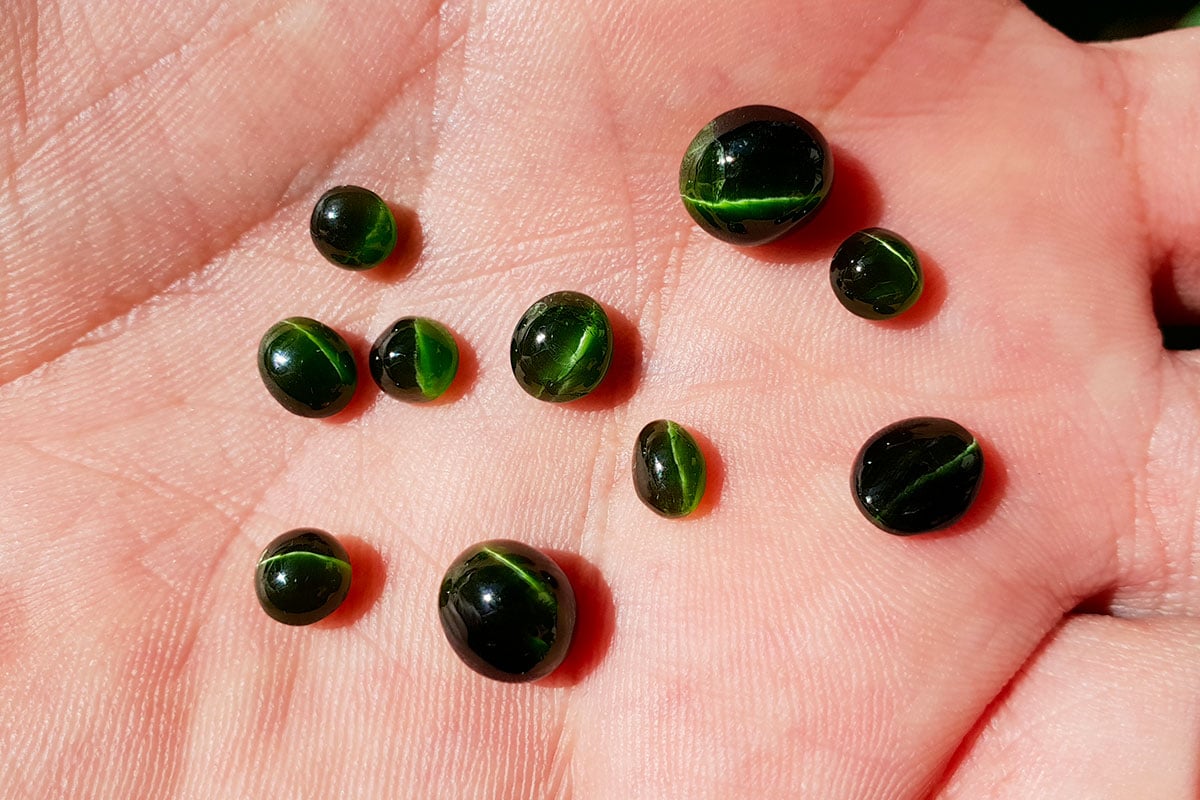
Cat’s eye kornerupine is also called Prismatine.
Buy natural gemstones in our gem shop
Cat’s eye kornerupine
It is a rare boro-silicate mineral with the formula (Mg,Fe2+)4(Al,Fe3+)6(SiO4,BO4)5(O,OH)2. It crystallizes in the orthorhombic – dipyramidal crystal system as brown, green, also yellow to colorless slender tourmaline like prisms or in massive fibrous forms.
First of all, It has a Mohs hardness of 7. Another, a specific gravity of 3.3 to 3.34. Furthermore, Its indices of refraction are nα=1.660 – 1.671, nβ=1.673 – 1.683 and nγ=1.674 – 1.684.
It occurs in boron-rich volcanic and also sedimentary rocks which have undergone high grade metamorphism. We also found it in metamorphosed anorthosite complexes.
Cat’s eye kornerupine is commonly found with sapphirine, also cordierite, spinel, corundum, tourmaline, grandidierite, dumortierite, kyanite, sillimanite, andalusite, biotite, phlogopite, magnetite, ilmenite, hematite, rutile.
Cat’s eye kornerupine is valuable as a gemstone when it is translucent green to yellow shades. The emerald green varieties are especially sought after. It forms a solid solution series with prismatine. Strongly pleochroic, it appears green or reddish brown when viewed from different directions. It has a vitreous luster.
It was first described in 1884 for an occurrence in Fiskernæs in southwest Greenland. The name kornerupine comes from the Danish geologist, Andreas Nikolaus Kornerup (1857–1883). It was not until 1912 that gem-quality material was found. It remains uncommon to this day.
Cat’s eye effect
In gemology, chatoyancy, also chatoyance or cat’s eye effect, is an optical reflectance effect visible in certain gemstones. Coined from the French “oeil de chat”, meaning “cat’s eye”, chatoyancy arises either from the fibrous structure of a material, as in cat’s eye tourmaline, or from fibrous inclusions or cavities within the stone, as in cat’s eye chrysoberyl.
The precipitates that cause chatoyance are the needles. Examined samples have yielded no evidence of tubes or fibers.The needles precipitates all align perpendicularly with respect to this effect. The lattice parameter of the needles matches only one of the three orthorhombic crystal axes of the chrysoberyl, as a result of an alignment along that direction.
The phenomenon resembles the brilliance of a silk spool. The luminous streak of reflected light is always perpendicular to the direction of the fibres. For a gemstone to show this effect better, the shape must be a cabochon.
Round with a flat base, rather than faceted, with the fibers or fibrous structures parallel to the base of the finished gem. The best finished specimens show a single sharply. A band of light that moves across the stone when it turns. Chatoyant stones of lesser quality display a banded effect as is typical with cat’s-eye varieties of quartz. Faceted stones do not show the effect well.
Cat’s eye kornerupine from India



